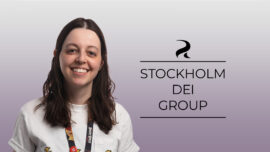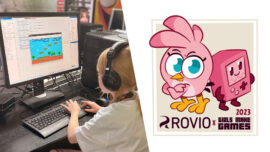
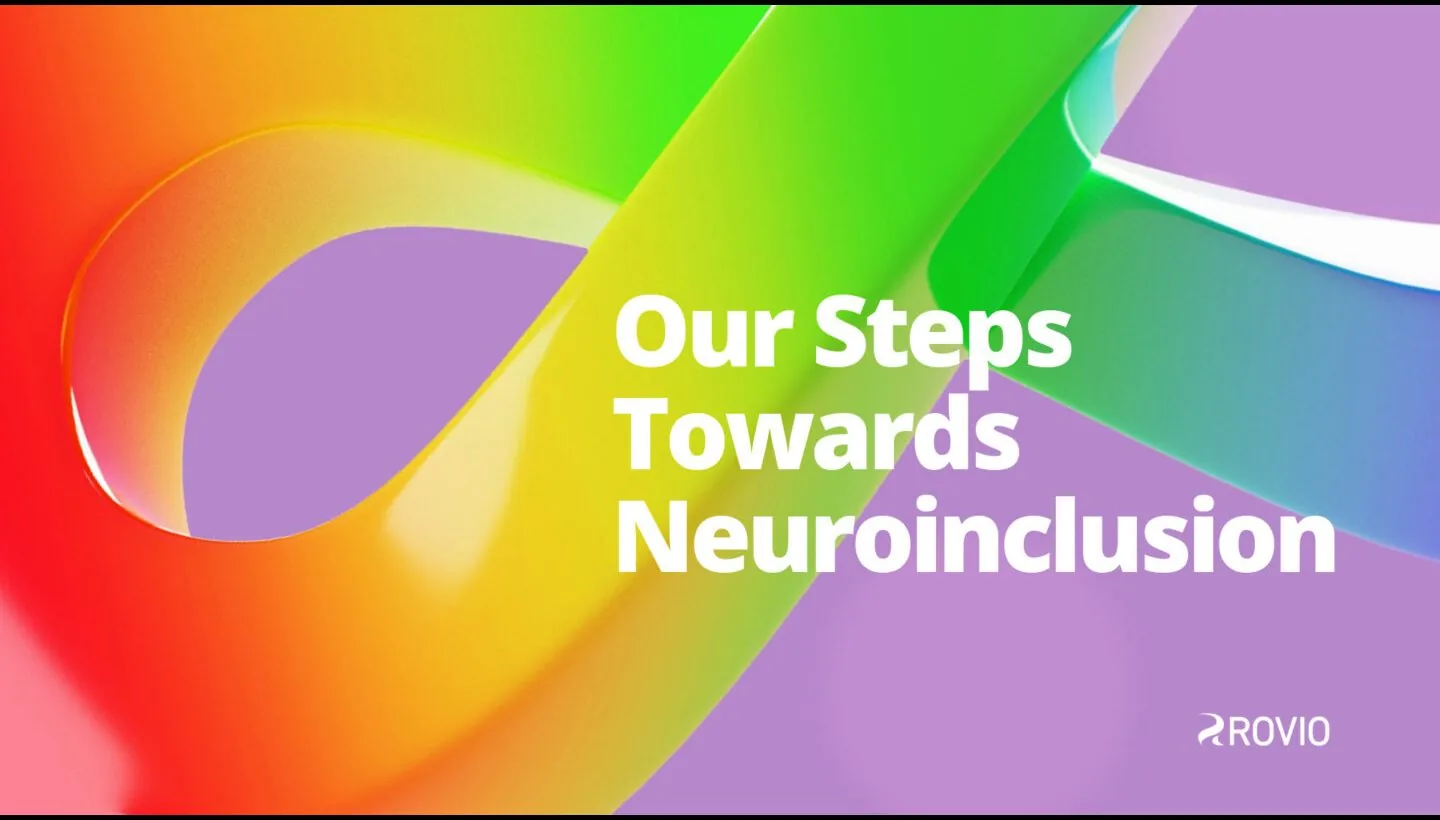
Head of DEI, Yumi Oishi, answers an important question that has been on the minds of many Rovians: “What are we doing about neurodiversity?”
Written by: Yumi Oishi, Head of Diversity, Equity & Inclusion
At Rovio, we believe that by tapping into the diversity and uniqueness of every Rovian and making sure their voices are heard, we can make the best games that resonate with our players. This also includes neurodifferences, i.e., neurodiversity. Neurodiversity is an umbrella term used to describe alternative thinking styles such as Autism, ADHD, Dyslexia, Dyspraxia and Dyscalculia.
Read on to learn how it all started, how we’ve been taking action and what we’ve done so far.
How did it all start?
I started in my Head of DEI role back in September 2022. As I was ramping up, I kept hearing left and right the same question from Rovians globally: “What are we doing about neurodiversity?”
In addition to employee feedback, another moment that highlighted the importance of neuroinclusion is when I heard that an estimated 15+% of the population are neurodivergent. Only 7% of our employees responded that they are neurodivergent in our DEI survey so. I couldn’t help but wonder if this was due to a lack of awareness and psychological safety. I took it as an indication that we had a lot of work cut out for us.
We started with building awareness and educating ourselves.
Our first step of action was six months ago when we hosted a Neurodiversity Awareness Webinar to learn about the fundamentals of neurodiversity. After that, we rolled out Workshops for Leaders, followed by Workshop for Teams, where we dug deeper into the topic, covering topics such as how to have support conversations, how to recruit neuroinclusively and how to manage talent through a neuroinclusive lens.
As we continued to roll out the workshops, I heard many of our employees say, “Isn’t this common sense?” This is because many neuroinclusive practices are practices that work for anyone like having clear goals, setting clear expectations, and writing clear & concise instructions. But how often do you get invited to a meeting with no clear purpose nor agenda? How common is it to receive a lengthy message full of unfamiliar jargon? It was encouraging to hear that even the seemingly basic steps could make an impact.
❝
Don’t try to fix people, fix the work environment.
— Pierre Escaich, Neurodiversity Talent Program Director at Ubisoft.
So what have we done so far?
The past months since we started working on neuroinclusion has been about making individual, interpersonal and systemic changes. It’s been about changes inside our company for employees as well as how we interact with people externally. Here are some examples of our progress:
For our work environment, we:
- Created dedicated spaces for quiet working in our Stockholm office and piloted the same in Espoo office.
- Provided accommodations to match individual needs (e.g. sound absorbing screens for desks, “do not disturb” signs) even without a formal diagnosis.
- Updated our internal “Guide to Hosting Inclusive Events”.
- Made the process for ordering noise canceling headphones more accessible.
- Have fidget toys available in our offices to aid concentration.
For our community & candidates, we:
- Educated ourselves and embedded neuroinclusive communication practices to better engage with the Angry Birds community.
- Ensured job postings set clear expectations (e.g. must-haves and nice-to-haves, interview process).
- Added statement about reasonable accommodation in our job postings to make the requesting process accessible.
For our learning & awareness, we:
- Added neuroinclusive formatting guidance in company presentation templates.
- Published employee stories internally, sharing the experiences of neurodiverse colleagues.
Spotlight on Neurodiversity Celebration Week
A particular highlight has been celebrating Neurodiversity Celebration Week internally which is a worldwide initiative that challenges stereotypes and misconceptions about neurological differences. We offered various ways for people to engage with the content so those who might not initially think that neurodiversity is relevant to them could still join in. This included hearing from experts like Pierre Escaich, Neurodiversity Talent Program Director at Ubisoft, and making resources for microlearning like “7 ways to make your meetings more neuroinclusive” available in our office.
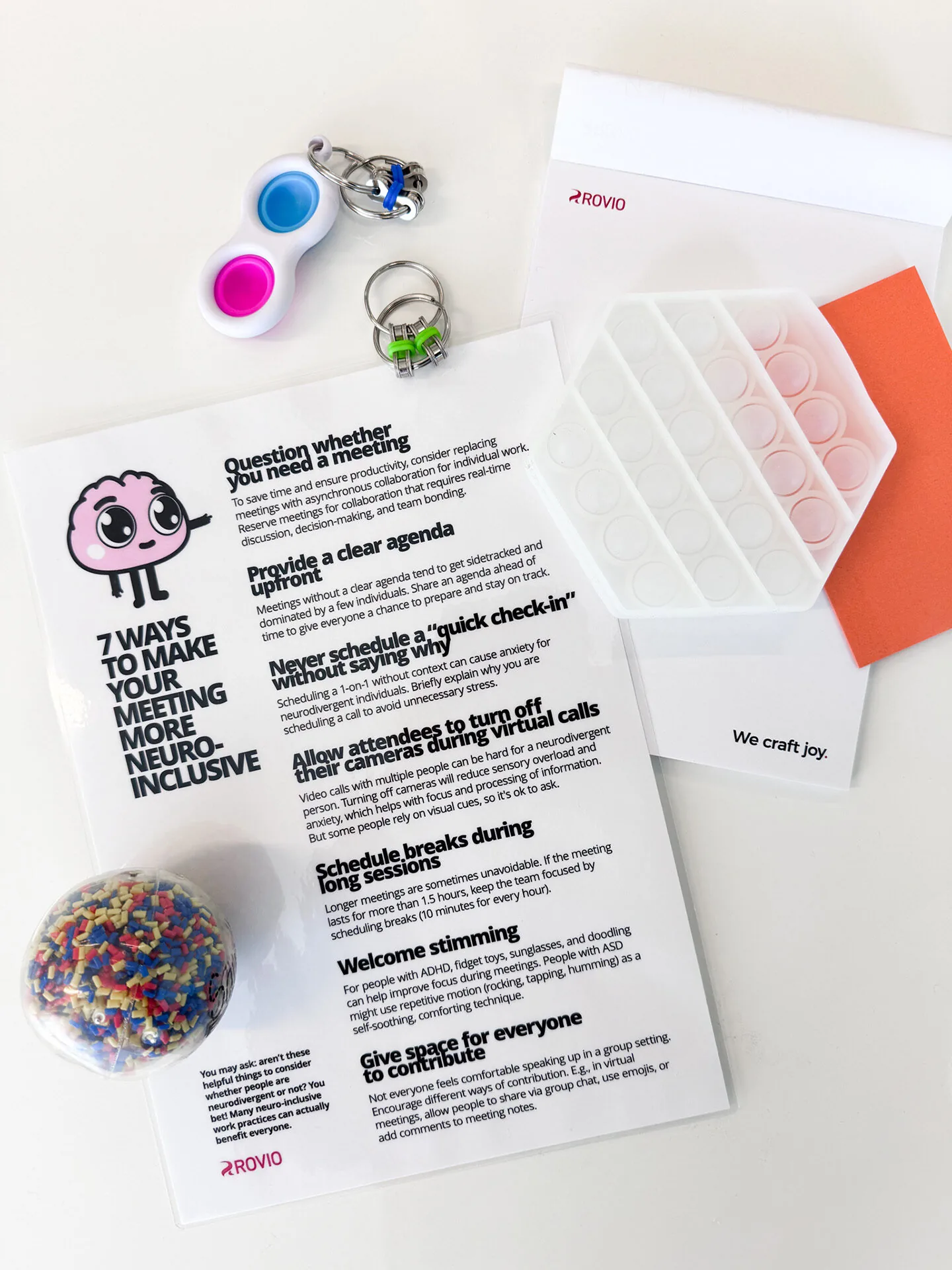
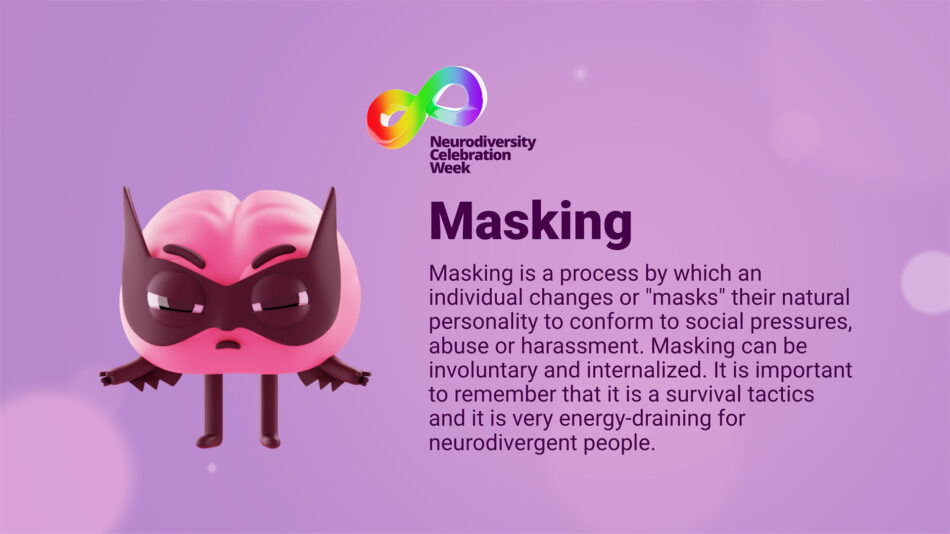
As a DEI practitioner, the speed of change can be somewhat disappointing and makes me cynical at times. But even I was heartened to hear employee feedback like, “We have been seen and heard, it was a huge step towards a more inclusive work culture.” To build on this momentum, we’ll be going through 31 ideas that were submitted by employees to create an action plan to take the next step.
With ADHD Awareness Month and World Dyslexia Day coming up later this year, I’m excited to see how others will be celebrating in their workplaces, and more importantly, what actions companies will be taking leading up to these important events.
If you’d like to learn more about what you can do in your organization, here are some resources that I found particularly helpful:

